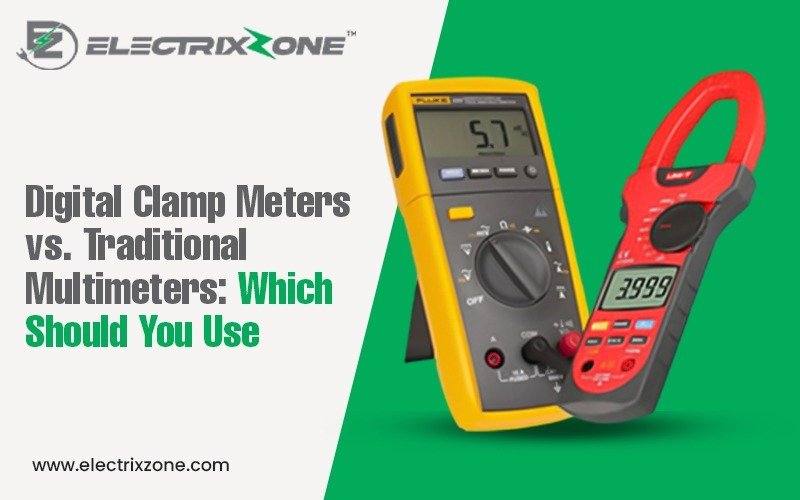Digital Clamp Meters vs. Traditional Multimeters: Which Should You Use?

Clamp meters and multimeters are tools to measure current in a conductor. However, both of these tools are different in terms of measurement methods and applications. A digital clamp meter measures current by clamping around the cable or wire, while a traditional multimeter measures voltage, current, and resistance by detecting faults in an electric circuit and providing electrical parameters in standard units. The choice between the two depends on your specific needs and applications. In this blog, we compare digital clamp meters and traditional multimeters to help you determine which suits your requirements.
Difference Between Digital Clamp Meters and Traditional Multimeters
Clamp meters and multimeters are crucial tools in electrical measurement and testing; however, there are a few distinctions that make them better suited for specific applications.
What is a Digital Clamp Meter?
A digital clamp meter, also known as a tong tester, is an electrical device used to measure current by clamping the cable without the need to disconnect the live load. The clamp of the meter can be opened and closed around the conductors for electrical testing. This digital clamp meter can measure AC/DC voltage, resistance, and current, making it an indispensable tool for professional engineers and electricians.
What is a Traditional Multimeter?
A traditional multimeter or multitester measures electrical properties like current, voltage, and resistance in a device or circuit. These traditional analogue multimeters have a needle that displays measurements that move over a calibrated scale that provides real-time readings.
Digital Clamp Meters vs. Traditional Multimeters: Which Should You Use?
Current Measurement:
When measuring current using a multimeter, you need to break the circuit. On the other hand, a digital clamp meter does not need to break the circuit, making it safer than a multimeter.
Multipurpose:
Analogue multimeters can measure resistance, temperature, current, and voltage. At times, it might require some additional attachments for specific measurement. A digital clamp meter designed to measure current, and can also measure other parameters resistance and voltage.
Resolution & Precision:
When it comes to resolution and precision, multimeters are better suited, particularly for measurement of resistance, voltage and frequency. However, digital clamp meters are more versatile for electricians.
Which Should You Use?
Before choosing between a digital clamp meter and a traditional multimeter, take into consideration a few factors like your measurement requirements, the accuracy needed, and the level of safety needed. The following tips will assist you in making an informed decision.
Traditional Multimeter: A basic analogue multimeter is the best suited if you want to check continuity measurements and basic resistance & and voltage.
Digital Clamp Meter: Digital clamp meters are ideal for testing currents across properties. Also, if safety is the main concern when performing current measurement, a digital clamp meter is best suited.
Both these tools are highly effective for measurement and troubleshooting. With these tips, you can choose the right device for your electrical project.
In the world of electrical measurement tools, choosing to invest in high-quality tools and equipment is vital. Want to buy digital clamp meters online? EletrixZone is a leading e-commerce platform for digital clamp meters and digital multimeters. Explore our online selection of digital clamp meters and digital multimeters.
